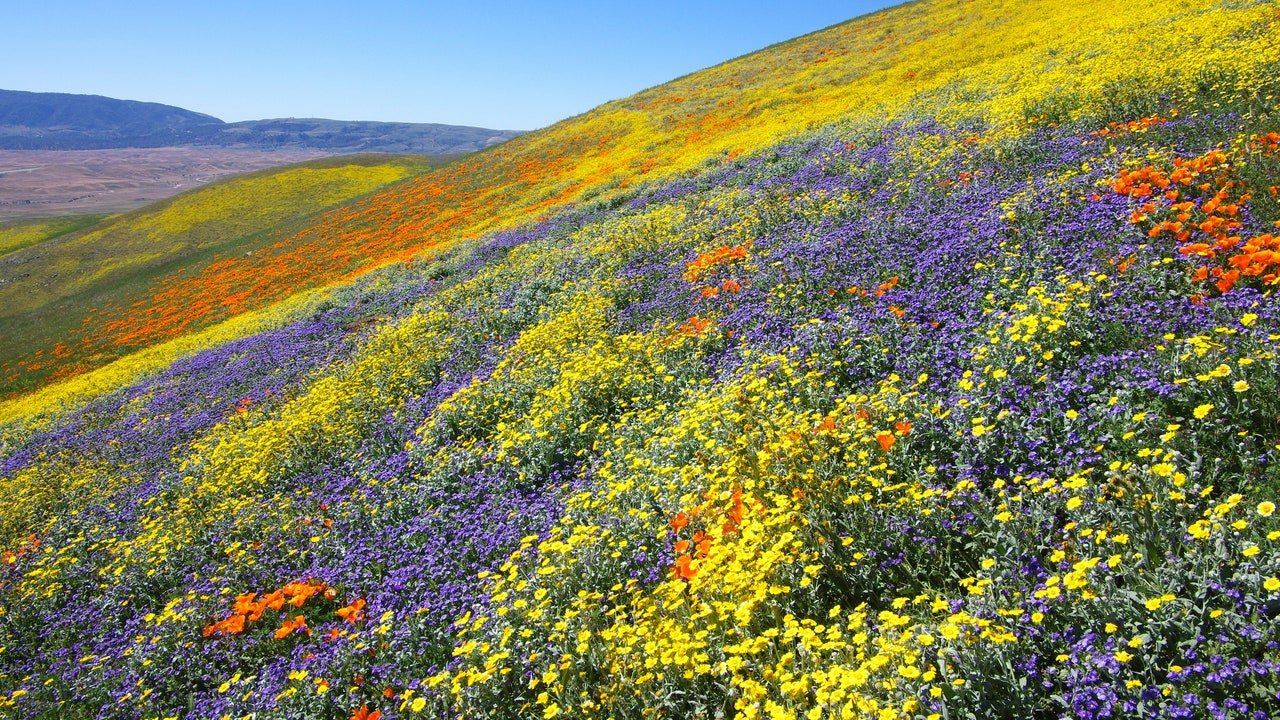One day earlier this spring, botanist Nick Jensen visited one of the few “super blooms” in California following a bone dry winter across the state. Under a bluebird sky, he hiked among displays of wildflowers that popped like confetti in sweeping hues of orange, purple, pink, and yellow. Native species like California poppy, lupine, and purple owl’s clover overtook the volcanic landscape known as North Table Mountain and spritzed their sweet perfume across the cool afternoon.
Jensen wasn’t alone—the rare spectacle had drawn thousands of people to the ecological reserve only an hour outside of Sacramento. In true super bloom fashion, visitors brought selfie sticks, sundresses, and wide brimmed hats, posing among the vast fields of color. Some crushed the very flowers they came to see.
Much of California this spring, however, remained parched and brown. Locations popular for their exceptional wildflower blooms like Anza Borrego Desert State Park—that drew crowds the size of Coachella in 2017 and 2019—produced small, modest wildflower displays. Other popular locations in Southern California like Death Valley National Park, Antelope Valley California Poppy Reserve, Carrizo Plain National Monument, and Walker Canyon were mostly devoid of wildflowers.
“Nothing is guaranteed on any given year,” says Jensen, the conservation program director of the California Native Plant Society. “For an exceptional year, you need a fair amount of rain that is spread out over a significant period of time from the late fall to early spring.” He notes that the phenomenon is multifactorial and that scientists still can’t exactly predict when large scale blooms will occur—adding to the mystique of the displays. While the magnificent blooms vary by region in California, they typically happen about once a decade. Native wildflowers provide critical habitat for pollinators, improve soil health, help prevent erosion, and promote healthy ecosystems.
